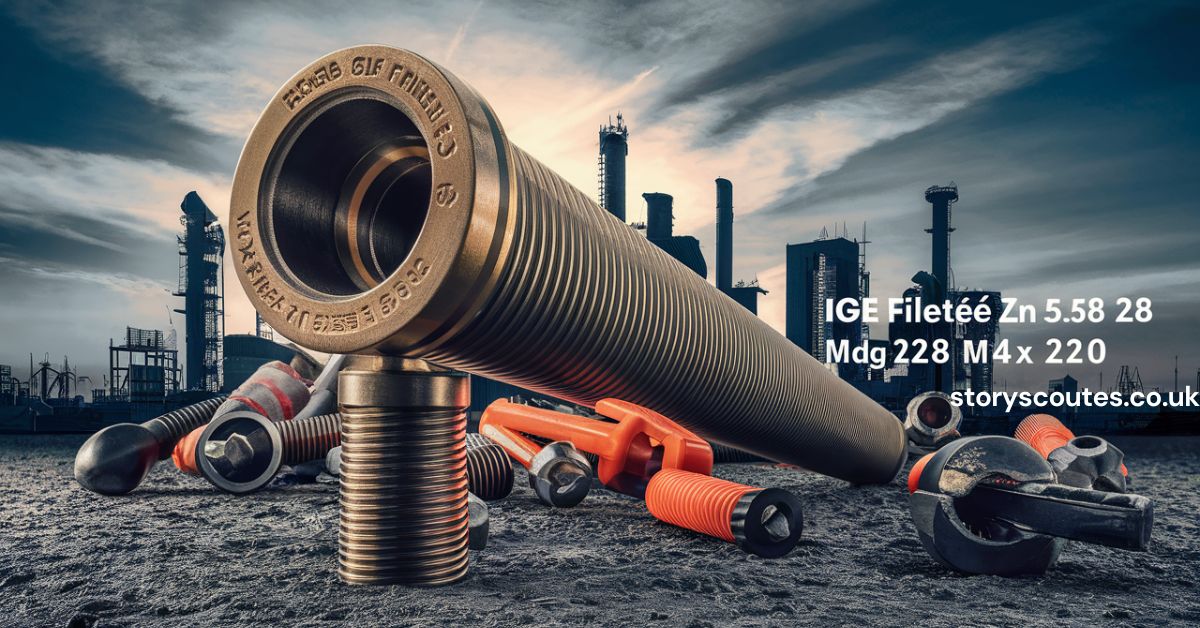IGE Filetée Zn 5.8 / HDG 5.8 M24 x 210 – Comprehensive Guide
When it comes to industrial components, precision and quality are key. One such essential component in the world of fasteners is the “IGE filetée Zn 5.8 / HDG 5.8 M24 x 210.” This article delves deep into this specific type of fastener, covering everything from its specifications to its applications. By the end of this guide, you’ll have a thorough understanding of what makes this fastener unique and why it’s a valuable choice for many industrial applications.
Introduction to IGE Filetée Zn 5.8 / HDG 5.8 M24 x 210
The IGE Filetée Zn 5.8 / HDG 5.8 M24 x 210 is a type of threaded bolt that plays a crucial role in various construction and engineering projects. Understanding its components and specifications is essential for selecting the right fastener for your needs.
What Does IGE Filetée Zn 5.8 / HDG 5.8 M24 x 210 Mean?
- IGE Filetée: This term typically indicates that the fastener has a threaded design, which means it has spirals cut into its surface to enable secure connections with corresponding nuts or tapped holes.
- Zn 5.8: This refers to the material and strength grade of the fastener. “Zn” stands for zinc, indicating that the fastener is coated with a layer of zinc for corrosion resistance. The number “5.8” denotes the strength grade of the steel used in the fastener.
- HDG 5.8: “HDG” stands for Hot-Dip Galvanized, which is a type of coating applied to protect the fastener from rust and corrosion. The “5.8” strength grade signifies a specific tensile strength and yield strength of the steel.
- M24 x 210: This is a description of the fastener’s size. “M24” indicates that the bolt has a nominal diameter of 24 millimeters, while “210” refers to the length of the bolt in millimeters.
Key Specifications
1. Material and Coating
- Zinc Coating: The zinc coating (Zn) is applied to protect the fastener from environmental factors that can cause rust. This is essential in outdoor and marine environments where corrosion is a concern.
- Hot-Dip Galvanization (HDG): This process involves dipping the fastener in molten zinc to provide a thicker and more durable coating than electroplated zinc. It offers superior protection against severe weather conditions and corrosion.
2. Strength Grade
- Grade 5.8: This grade indicates the tensile strength and yield strength of the bolt. Specifically, it means the bolt has a tensile strength of 500 MPa and a yield strength of 400 MPa. This makes it suitable for medium-strength applications.
3. Dimensions
- M24 Diameter: The M24 designation means the bolt has a nominal diameter of 24 mm. This size is commonly used in heavy-duty applications where a robust connection is needed.
- 210 mm Length: The length of 210 mm provides adequate length for securing thicker materials or creating strong connections.
Applications of IGE Filetée Zn 5.8 / HDG 5.8 M24 x 210
1. Construction
In construction, these bolts are used for connecting structural elements, such as beams, columns, and foundations. Their strength and corrosion resistance make them ideal for supporting heavy loads and withstanding harsh weather conditions.
2. Engineering Projects
Engineers often use these fasteners in machinery and equipment where durability and reliability are critical. The hot-dip galvanization ensures that the bolts remain functional even in challenging environments.
3. Marine and Outdoor Uses
Due to their excellent corrosion resistance, these fasteners are perfect for marine and outdoor applications. They can be used in docks, bridges, and other structures exposed to the elements.
Choosing the Right Fastener
1. Strength Requirements
Ensure that the strength grade of the fastener meets the requirements of your project. For applications requiring high strength and durability, the Grade 5.8 fastener is a suitable choice.
2. Environmental Conditions
Consider the environmental conditions where the fastener will be used. For outdoor or marine applications, the HDG coating provides superior protection against corrosion.
3. Size and Length
Choose the correct diameter and length for your application. An M24 x 210 bolt is suitable for projects requiring a large diameter and longer length for secure fastening.
Installation and Maintenance
1. Installation
Proper installation of the IGE filetée Zn 5.8 / HDG 5.8 M24 x 210 fastener is crucial for ensuring a secure connection. Use the appropriate tools and ensure that the bolt is tightened to the specified torque to avoid failure.
2. Maintenance
Regular inspections and maintenance can help prolong the life of the fastener. Check for signs of wear or corrosion and replace any damaged bolts to maintain the integrity of the structure or equipment.
FAQs
What is the difference between zinc plating and hot-dip galvanization?
Zinc plating involves applying a thin layer of zinc to the surface of the fastener through electroplating, while hot-dip galvanization involves dipping the fastener into molten zinc, providing a thicker and more durable coating.
How do I determine the correct size of a bolt for my project?
Consider the requirements of your project, including the load-bearing capacity and the thickness of the materials to be connected. The diameter and length of the bolt should be chosen based on these factors.
Can I use IGE filetée Zn 5.8 / HDG 5.8 M24 x 210 bolts in high-temperature environments?
For high-temperature environments, check the specific temperature ratings of the fastener. Standard zinc and galvanization coatings may not be suitable for extreme temperatures.
How do I install IGE filetée Zn 5.8 / HDG 5.8 M24 x 210 bolts?
Use the appropriate tools for tightening and ensure that the bolt is secured to the manufacturer’s specifications. Follow best practices for installation to avoid damaging the fastener or the materials being connected.
Conclusion
The IGE Filetée Zn 5.8 / HDG 5.8 M24 x 210 fastener is a vital component in various industrial applications, offering strength, durability, and corrosion resistance. By understanding its specifications and applications, you can make informed decisions for your projects and ensure reliable performance.
For any specific requirements or further assistance, consulting with a professional or supplier can provide additional guidance and support.






